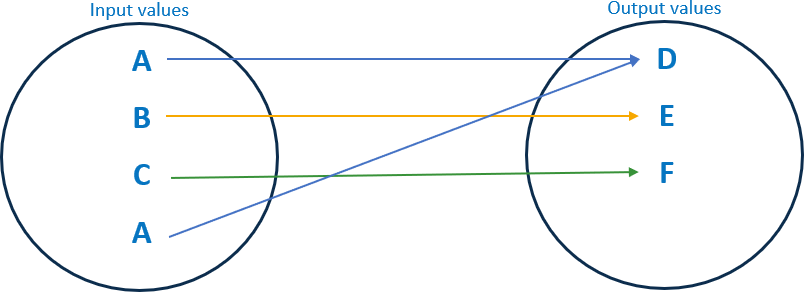Bijective data masking
Bijective masking functions have the following characteristics:
- They are consistent masking functions.
- They are injective, meaning that they output two different masked values for two different input values.
- They check that the input data is in a valid format. If the input value is valid, bijective masking functions output a valid value. If the input value is not valid, they output an invalid value or replace values with null, depending of the masking function used.
For example, the following diagram shows an example of how the
tDataMasking component can mask data bijectively:
- The A value is masked with D, regardless of the number of occurrences in the input dataset.
- The B value is masked with E.
- The C value is masked with F.

Bijective data masking examples
The following table shows examples of generated masked values using the Mask French SSN number function:
| Input values | Example of masked values |
|---|---|
| 190049418437621 | 289052428331901 |
| 271083561478941 | 234112758889352 |
| 190049418437621 | 289052428331901 |
| 117029 | null |
